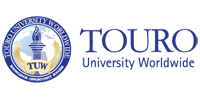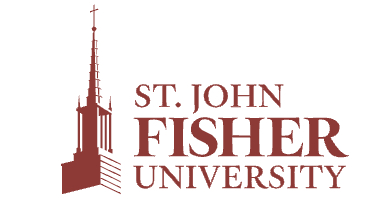In 2011–12, graduate students received an average of $25,152 in aid, including $7,417 in grant aid, $16,796 in federal loans, and $939 in a combination of tax credits and deductions and Federal Work-Study according to the College Board publication Trends in Student Aid 2012.
To receive any federal or state financial aid, the student must file the Free Application for Federal Student Aid (FAFSA), the same form that you or your parents filed for undergraduate financial aid. For purposes of the FAFSA, graduate or professional students are considered independent so only the student’s income and assets are used to calculate financial need, even if the student is still receiving financial support from a parent. By filing the FAFSA, a graduate or professional student may be eligible to receive financial aid from one or more of the following programs.
Federal Stafford Loans. The Heath Care and Education Reconciliation Act of 2010 mandates that all schools process loans through the Federal Direct Loan Program (FDLP).
This legislation changes the federal Stafford loan, PLUS loan (for parents and graduate/professional students), and consolidation loan application process.
All federal student loans are now made directly through the U.S. Department of Education.
You must complete the FAFSA (Free Application for Federal Student Aid) for Stafford and/or graduate student PLUS loans. Borrowers will have to complete a Master Promissory Note (MPN). You will accept or decline your federal student loans through your school, which works directly with the federal government. For graduate students interested in a PLUS loan, completing the PLUS Loan Information Form will initiate the application process. Contact your school’s financial aid office for detailed information.
To be eligible for a federal loan, you must be a U.S. citizen/national, or eligible noncitizen. You must also be enrolled at least half-time in a degree-granting program at an approved college or university.
The Federal Stafford Student Loan Program, operated through the federal government, offers long-term, low-interest loans. As a result of the Heath Care and Education Reconciliation Act of 2010 all federal student loans are now made directly through the U.S. Department of Education.
Effective for loans made for payment periods that begin on or after July 1, 2012, graduate and professional students are no longer eligible to receive subsidized loans, meaning the student is responsible for all interest from the time the loan is dispersed. While no longer eligible for unsubsidized loans, graduate and professional students may still qualify for up to $20,500 in unsubsidized loans each year. However, you generally may not borrow more than the $138,500 which includes loans taken for undergraduate study.
The interest rate for Federal Stafford Loans is a fixed 6.8 percent for graduate and professional students. The program offers a grace period of six months. That means that once you graduate, or cease to be enrolled at least half-time (as determined by your school), you will not be required to make a payment on your loan for six months.
The federal government has also put certain “safety nets" into place if you are faced with a situation where you can’t make your loan payments. You can apply for deferment and/or forbearance to temporarily postpone or reduce your monthly payments. Under certain circumstances you can also have your loan cancelled or discharged.
You may also want to consider one of the loan forgiveness for public service employees options. This option usually involves having a portion of your loan paid (or forgiven) by the government in return for your commitment to work in a designated public service field for a specified amount of time. For more information on this option visit
www.federalstudentaid.ed.gov and click on “Students, Parents and Counselors."
Federal Perkins Loan. A Perkins Loan is federal money given to colleges and universities to distribute to students who demonstrate financial need. The school you attend is the lender, and you will repay any monies borrowed directly to the school. Depending on financial need as determined by the FAFSA, graduate and professional students are eligible to receive up to $8,000 per year (maximum of $60,000 including undergraduate loans). The interest rate is 5 percent. As with Federal Stafford Loans, deferments, forbearances, cancellations and forgiveness may be available. Visit the Web site
www.federalstudentaid.ed.gov for more information.
Plus Loans. The PLUS Loan allows the graduate or professional student to borrow an amount equal to the difference between the student’s cost of education (room, board, tuition and fees) and the amount of financial aid the student receives. PLUS Loans have a fixed interest rate of 7.9 percent.
Repayment of principal and interest must begin within 60 days after full disbursement of the loan. The interest is not subsidized while the student is in school. The PLUS Loan charges loan fees of 4 percent, deducted from each disbursement check.
TEACH Grant Program. The Teacher Education Assistance for College and Higher Education (TEACH) Grant Program is available to students who are currently completing coursework necessary to begin a career in teaching; or those who plan to complete coursework necessary to begin a career in teaching. In order to be eligible for awards of up to $4,000 per year (total may not exceed $8,000 for graduate students), the candidate must have at least a 3.25 GPA for each payment period. Upon graduation, the student must teach full-time for at least four years within eight years of completing their program, in a school designated as Title I by the U.S. Department of Education, in a high needs subject area. If the grant recipient fails to complete the service obligation, the award will be converted to a Federal Direct Stafford Loan.
(Note: Due to sequester, award amounts for any TEACH Grant that is first disbursed after March 1, 2013 must be reduced by 7.1 percent from the award amount for which a recipient would otherwise have been eligible.)
Federal Pell Grant. While usually awarded to undergraduate students who demonstrate financial need, Pell Grants may be awarded to graduate students who are enrolled in a postbaccalaureate teacher certificate program. The maximum Pell award for academic year 2012–13 is $5,550. Contact your school’s financial aid office for additional information and to check your eligibility for a Pell Grant.
Federal Work-Study Program. This program provides part-time employment while you are enrolled in school. The program encourages community service work or work related to your course of study, whenever possible. Employment is available both on-campus and within the community. You will earn at least the current federal minimum wage and be paid on either an hourly or salary basis, depending on the type of work you do. Contact the school’s financial aid office for more information.
Tuition Tax Credits. Tuition tax credits represent a direct subtraction from the amount of tax owed by the taxpayer. For more information on all the tax benefits outlined below consult your tax professional or refer to IRS Publication 970, Tax Benefits for Higher Education. This is available online at
www.irs.gov or by calling the IRS at 800-829-1040.
Lifetime Learning Credit. For students in graduate school (as well as adults returning to school) a tuition tax credit is allowed, equal to 20 percent of the first $10,000 paid in tuition and fees, or $2,000. You cannot claim the credit if your modified adjusted gross income is $60,000 or more ($120,000 if filing jointly).
Student Loan Interest Deduction. Interest paid on student loans will now be considered a tax deduction. This benefit comes in the form of an adjustment to income, meaning you do not need to itemize on your tax return in order to be eligible. The deduction can reduce taxable income by up to $2,500. The deduction is phased out for single tax filers with adjusted gross incomes of more than $75,000; $150,000 for joint filers.
Tuition and Fees Deduction. Taxpayers can deduct up to $4,000 in tuition expenses as an exclusion from income. This means itemizing deductions on Schedule A of the 1040 is not necessary. The deduction is phased out for taxpayers with adjusted gross incomes of more than $80,000 (single filers) and $160,000 (married filing jointly). The deduction cannot be used if the Lifetime Learning tax credit was applied for the same student in the same year.
AmeriCorps. AmeriCorps is a national service project that works with nonprofit organizations/agencies and educational institutions to run local programs that engage individuals from all backgrounds in community service activities. Volunteers who have completed 1,700 hours (one year) of service are eligible for a Segal AmeriCorps Education Award of $5,550. This award may be used to repay educational loans for those who have attended college or may be used for future educational costs by volunteers who have not yet attended college. Americorps participants may also qualify for the Public Service Loan Forgiveness Program and the Income-Based Repayment Plan. As an added benefit, there are currently more than 100 colleges and universities nationwide that offer matching grant programs to students who are Segal AmeriCorps Education Award recipients.








